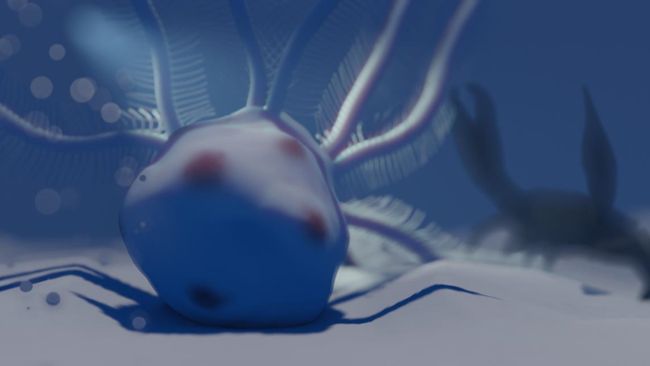Welcome to DU!
The truly grassroots left-of-center political community where regular people, not algorithms, drive the discussions and set the standards.
Join the community:
Create a free account
Support DU (and get rid of ads!):
Become a Star Member
Latest Breaking News
General Discussion
The DU Lounge
All Forums
Issue Forums
Culture Forums
Alliance Forums
Region Forums
Support Forums
Help & Search
Science
Related: About this forumFirst animal 'buckyballs' discovered in 80-million-year-old sea lillies
By Mindy Weisberger - Senior Writer 10 hours ago
This odd shape was previously only seen in nature at the molecular scale

Reconstruction of the Cretaceous marine animal Marsupites testudinarius.
(Image: © J. Hoyal Cuthill)
Weird, multisided geometric shapes called buckyballs have been discovered in an unexpected place: marine animals that lived 80 million years ago.
Microscopic forms of buckyballs have been found in molecules within cosmic dust, in gases and in some types of rocks. But researchers were surprised to find them at a much larger scale in fossils of two species of Cretaceous crinoids, which are relatives of modern starfish and sea urchins. The plates on the crinoids' bodies created multifaceted, hollow structures that the scientists identified as buckyballs.
Their discovery is the first evidence that the bizarre buckyball shape occurs naturally at such a large scale, the scientists reported in a new study.
Buckyballs, short for "Buckminsterfullerenes," are large spherical molecules, that are made up of 60 carbon atoms linked together in pentagons and hexagons, forming a surface like that of a soccer ball. These strange molecules, first discovered in space in 2010, got their name from architect Buckminster Fuller, who popularized a similar structure in the 1940s called a geodesic dome.
More:
https://www.livescience.com/hollow-buckyballs-in-cretaceous-fossils.html?utm_source=notification
InfoView thread info, including edit history
TrashPut this thread in your Trash Can (My DU » Trash Can)
BookmarkAdd this thread to your Bookmarks (My DU » Bookmarks)
3 replies, 1014 views
ShareGet links to this post and/or share on social media
AlertAlert this post for a rule violation
PowersThere are no powers you can use on this post
EditCannot edit other people's posts
ReplyReply to this post
EditCannot edit other people's posts
Rec (5)
ReplyReply to this post
3 replies
 = new reply since forum marked as read
Highlight:
NoneDon't highlight anything
5 newestHighlight 5 most recent replies
= new reply since forum marked as read
Highlight:
NoneDon't highlight anything
5 newestHighlight 5 most recent replies
First animal 'buckyballs' discovered in 80-million-year-old sea lillies (Original Post)
Judi Lynn
May 2020
OP
NNadir
(33,512 posts)1. Fullerenes were discovered in 1985, and not 2010. Richard Smalley...
...who shared the Nobel Prize for the discovery with Robert Curl and Harold Kroto in 1996 for the discovery, died in 2005.
They were not first discovered in space. They were first discovered in a laboratory, in soot, at Rice University in Texas.
Judi Lynn
(160,516 posts)2. Wow. I wouldn't have known. Thank you, so much. n/t
NNadir
(33,512 posts)3. You're welcome. I think the journalist made a grammatical error that's easy to make.
I often catch myself making this error of a "misplaced modifier," especially when writing quickly.
She wrote:
These strange molecules, first discovered in space in 2010, got their name from architect Buckminster Fuller, who popularized a similar structure in the 1940s called a geodesic dome.
A better version would simply delete reference to discovery - which is essentially irrelevant to the article's point- and read:
These strange molecules, got their name from architect Buckminster Fuller, who popularized a similar structure in the 1940s called a geodesic dome.
If she wished to add the interesting detail about discovery in space, she might have written an additional sentence:
These molecules, first discovered on Earth in 1985, were found to exist in space in 2010.
I once knew a professor at UCLA whose students had spent huge efforts to synthesize these molecules via a complex series of cycloadditions, only to find out that the molecules occured naturally. The Nobel was based not on synthesis, but rather on discovery in nature. Nevertheless, the synthetic approaches were valuable, since many of the intermediates are of interest.
Despite making many grammatical errors in writing myself, I am a grammar Nazi.